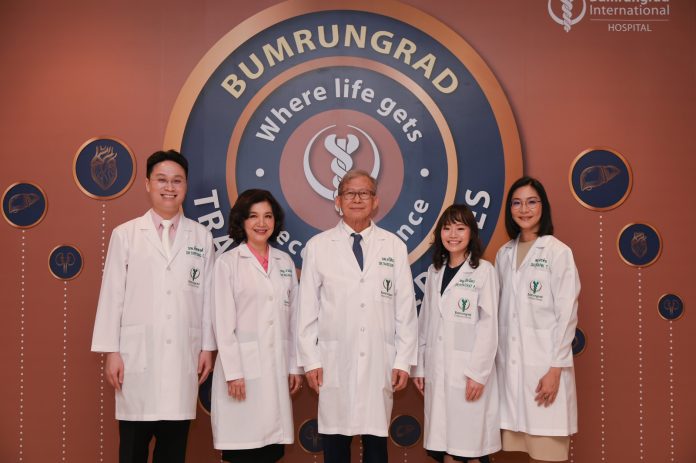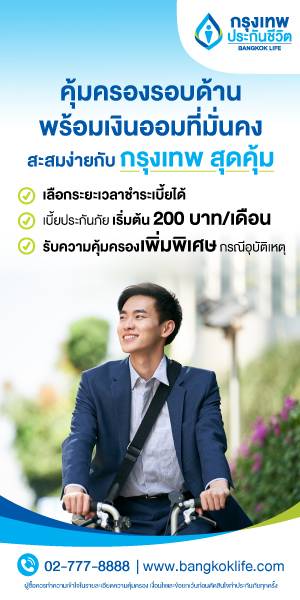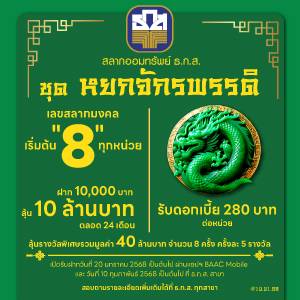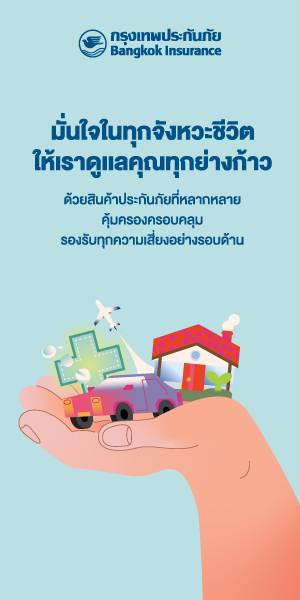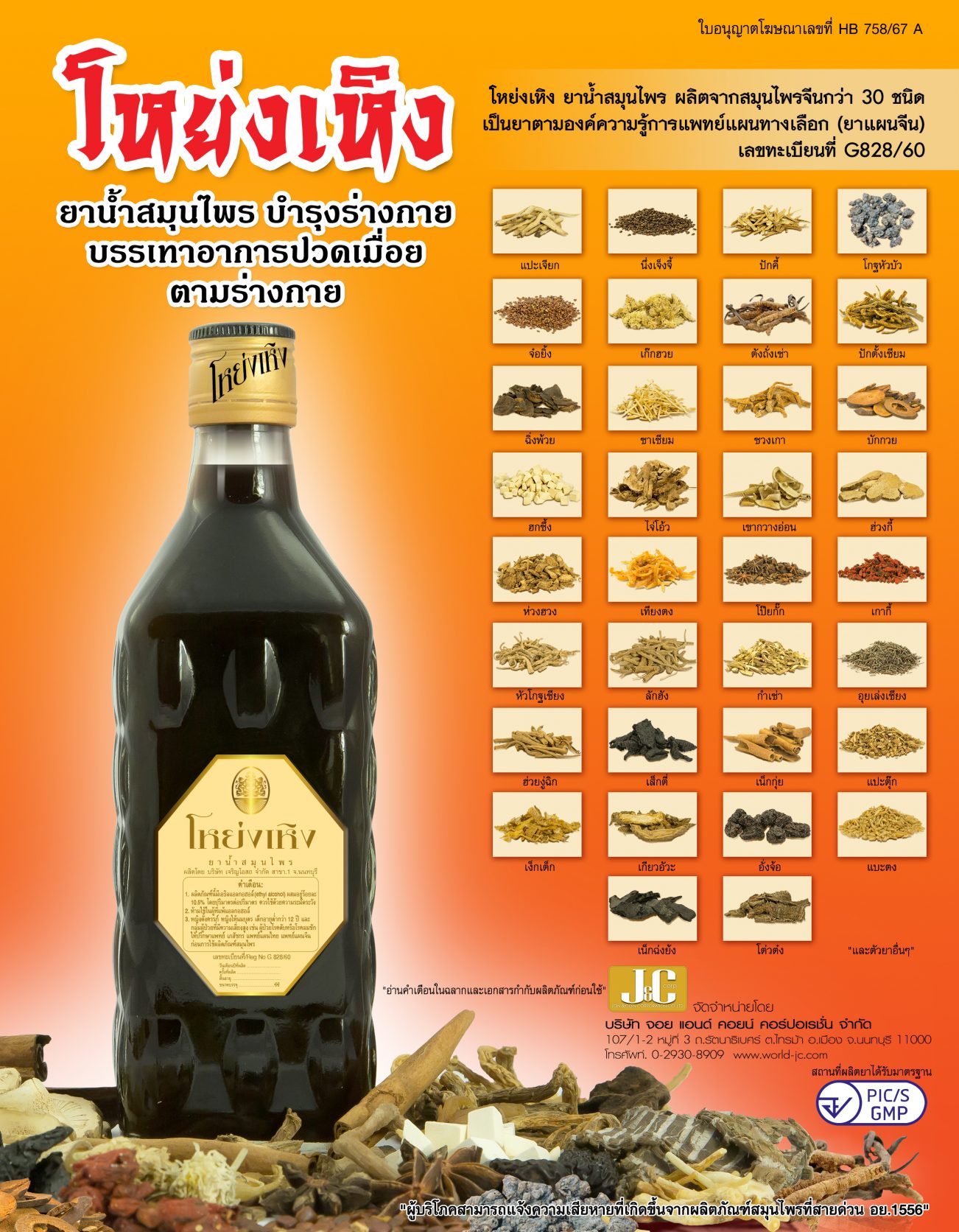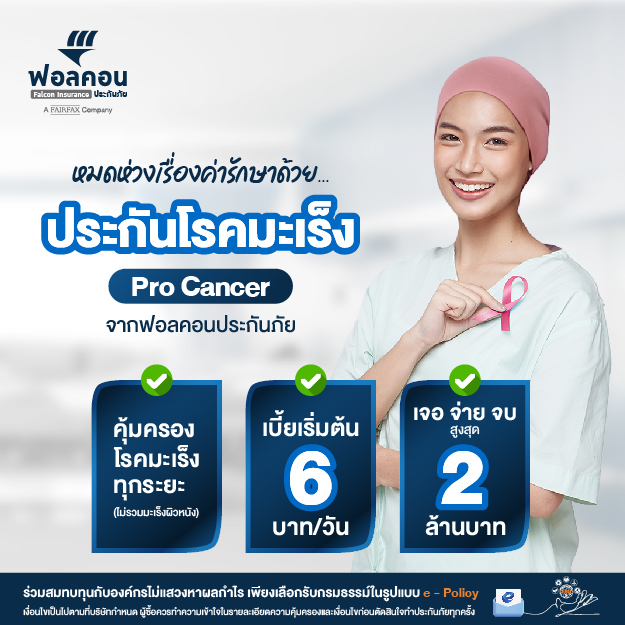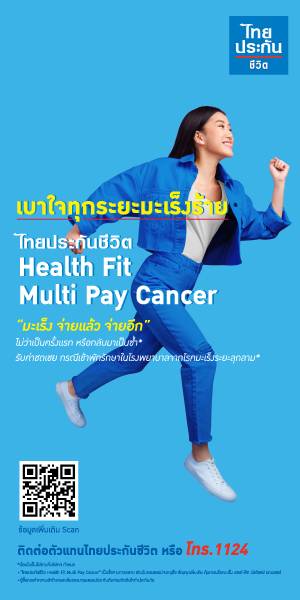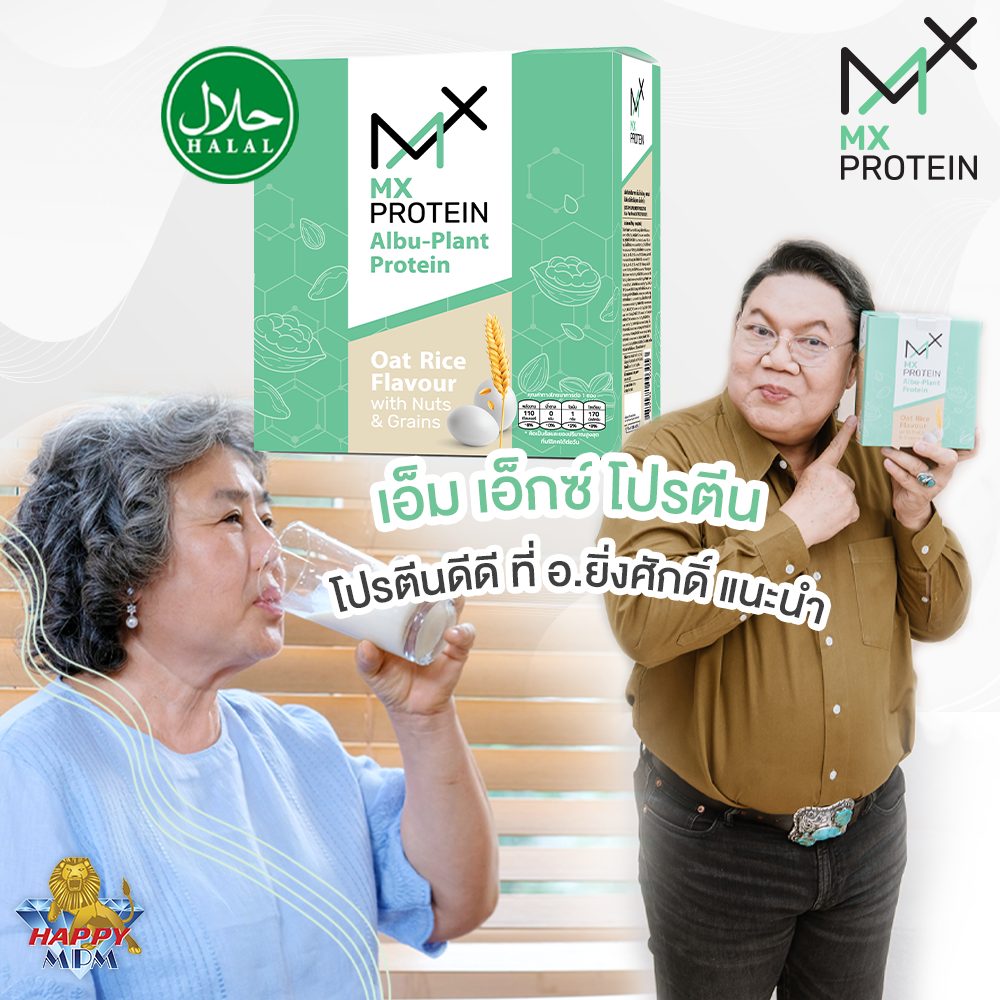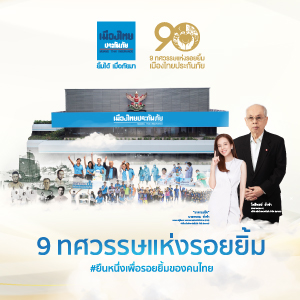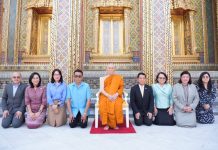‘การปลูกถ่ายอวัยวะ’ นับเป็นความก้าวหน้าของเทคโนโลยีทางการแพทย์ที่สำคัญอย่างมากในการช่วยชีวิตและฟื้นฟูคุณภาพชีวิตองผู้ป่วยโรคเรื้อรังได้หลายโรค เช่น โรคไตเรื้อรัง โรคตับแข็ง และโรคหัวใจล้มเหลว รวมถึงการผ่าตัดเปลี่ยนกระจกตา ซึ่งเปรียบเสมือนการให้ชีวิตใหม่เพื่อให้ผู้ป่วยสามารถกลับมาใช้ชีวิตได้ปกติและมีคุณภาพชีวิตที่ดีอีกครั้ง
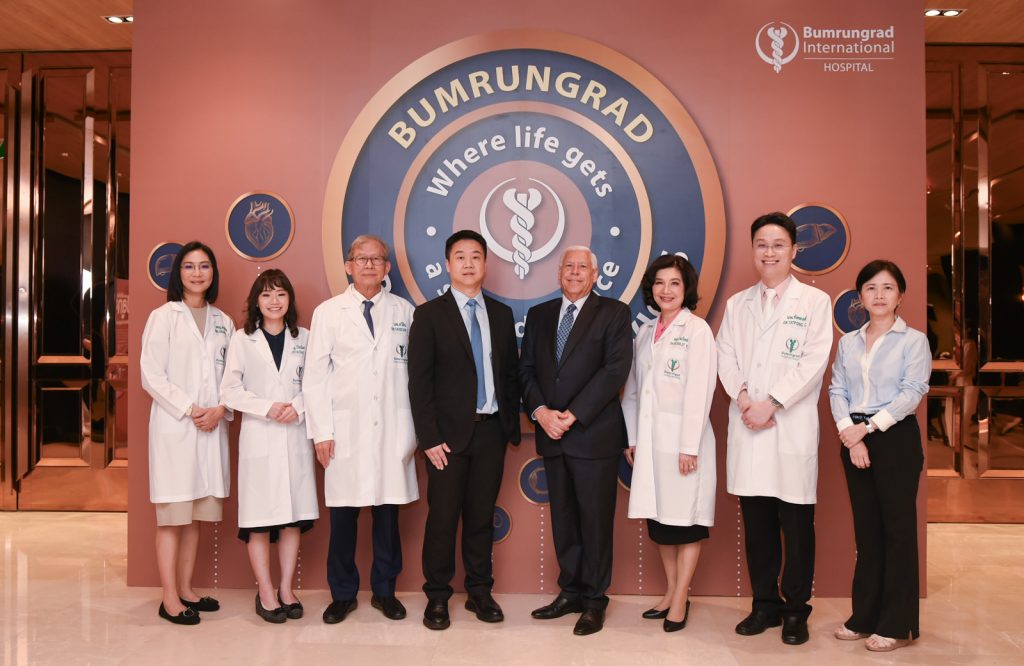
ปัจจุบันทั่วโลกกำลังเผชิญกับปัญหาขาดแคลนอวัยวะปลูกถ่าย โดยข้อมูล Global Observatory on Donation and Transplantation (GODT) ระบุว่าในปี 2022 ทั่วโลกมีการปลูกถ่ายอวัยวะทั้งหมดเพียง 157,494 ครั้ง และ ‘ไต’ เป็นอวัยวะที่ได้รับการปลูกถ่ายมากที่สุดในโลก รองลงมาคือ ตับ และหัวใจ และยังมีผู้ป่วยจำนวนมากที่รอการปลูกถ่ายอวัยวะ ขณะที่ข้อมูลของประเทศไทยล่าสุด ณ วันที่ 31 ธันวาคม 2567 จากศูนย์รับบริจาคอวัยวะ สภากาชาดไทย ระบุว่า มีจำนวนผู้ป่วยที่รอการปลูกถ่ายอวัยวะ สูงถึง 7,486 ราย ซึ่งมีแนวโน้มเพิ่มขึ้นทุกปี โดย 95% เป็นผู้ป่วยที่รอ ‘ไต’ รองลงมา คือ ตับ หัวใจ ปอด และตับอ่อน ขณะเดียวกันมีผู้ที่ได้รับการปลูกถ่ายอวัยวะแล้วเพียง 946 ราย และจะมีผู้เสียชีวิตระหว่างรอคอยการปลูกถ่ายอวัยวะ เฉลี่ยสัปดาห์ละ 2 ราย
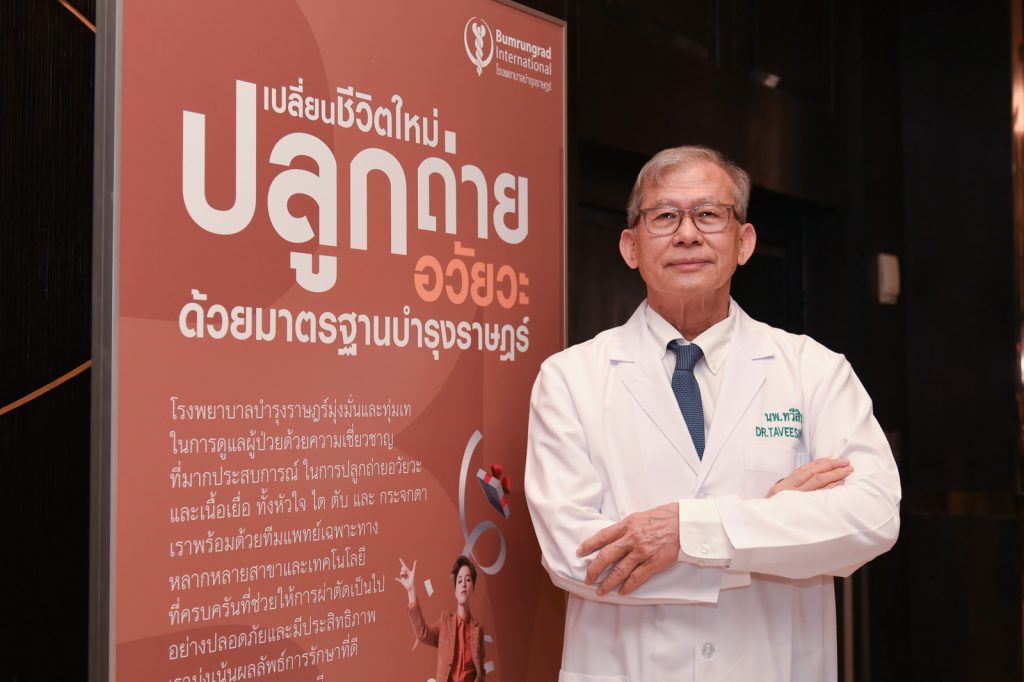
รศ.นพ. ทวีสิน ตันประยูร ประธานปฏิบัติการด้านการแพทย์ โรงพยาบาลบำรุงราษฎร์ ได้เปิดเผยในงานแถลงข่าว ‘Bumrungrad Transplant Services: Where Life Gets a Second Chance’ ว่า การปลูกถ่ายอวัยวะ เปรียบเสมือนความหวังใหม่และอีกโอกาสที่ทำให้ผู้ป่วยสามารถกลับมามีชีวิตใหม่ที่สมบูรณ์มากขึ้น ในฐานะที่บำรุงราษฎร์เป็นโรงพยาบาลที่ให้การรักษาในระดับจตุตถภูมิ (Quaternary Care) เราได้พัฒนาศูนย์ความเป็นเลิศทางการแพทย์เพื่อให้การบริบาลดูแลผู้ป่วยอย่างครอบคลุมเพื่อส่งมอบผลลัพธ์ที่ดีที่สุดมาอย่างต่อเนื่อง
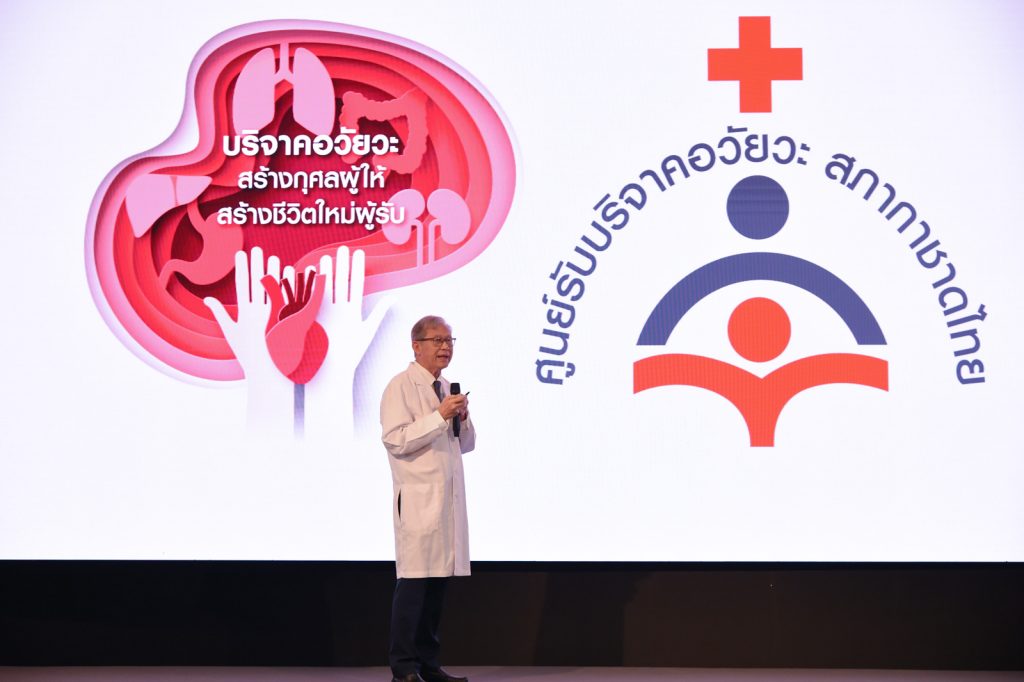
ด้วยทีมแพทย์และสหสาขาวิชาชีพที่มีประสบการณ์ในการผ่าตัดปลูกถ่ายอวัยวะสำคัญ ปัจจุบัน บำรุงราษฎร์เป็นโรงพยาบาลเอกชนที่ได้รับให้เป็นศูนย์การปลูกถ่ายอวัยวะหัวใจ ไต ตับ และกระจกตา จากศูนย์รับบริจาคอวัยวะสภากาชาดไทย และสามารถปลูกถ่ายอวัยวะได้ครบทั้ง 3 อวัยวะ และ 1 เนื้อเยื่อ ได้แก่ ‘หัวใจ ไต ตับ และกระจกตา’ ซึ่งการปลูกถ่ายอวัยวะถือเป็นการผ่าตัดที่มีความซับซ้อน จำเป็นต้องอาศัยความชำนาญการของทีมแพทย์และเทคโนโลยีที่ทันสมัย และทำในสถาบันที่มีมาตรฐานและมีประสบการณ์สูง
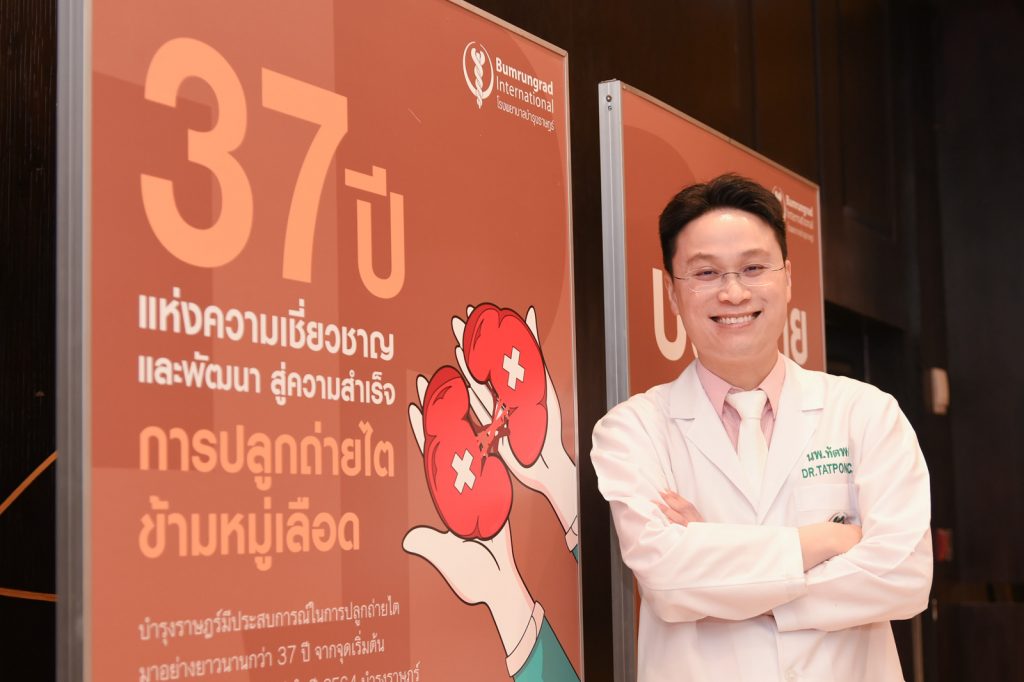
นพ. ทัตพงศ์ จิตเอื้ออารีย์ แพทย์เฉพาะทางด้านอายุรศาสตร์ – ไตวิทยา โรงพยาบาลบำรุงราษฎร์ กล่าวว่า ไต เป็นอวัยวะที่ได้รับการปลูกถ่ายบ่อยที่สุดในโลก โดยกลุ่มที่จำเป็นต้องได้รับการรักษาด้วยการปลูกถ่ายไต คือ ผู้ป่วยโรคไตระยะสุดท้าย ทั้งในกลุ่มที่ได้รับการบำบัดทดแทนไตหรือยังไม่ได้รับการบำบัดทดแทนไตสามารถปลูกถ่ายไตได้ ซึ่งผู้ป่วยกลุ่มนี้ต้องได้รับการประเมินความพร้อมด้านสุขภาพก่อนเข้ารับการปลูกถ่ายไตจากสหสาขาวิชาชีพ อาทิ แพทย์ผู้ชำนาญการด้านหัวใจ แพทย์ผู้ชำนาญการด้านจิตเวช แพทย์ผู้ชาญการด้านศัลยศาสตร์การปลูกถ่ายอวัยวะ เป็นต้น
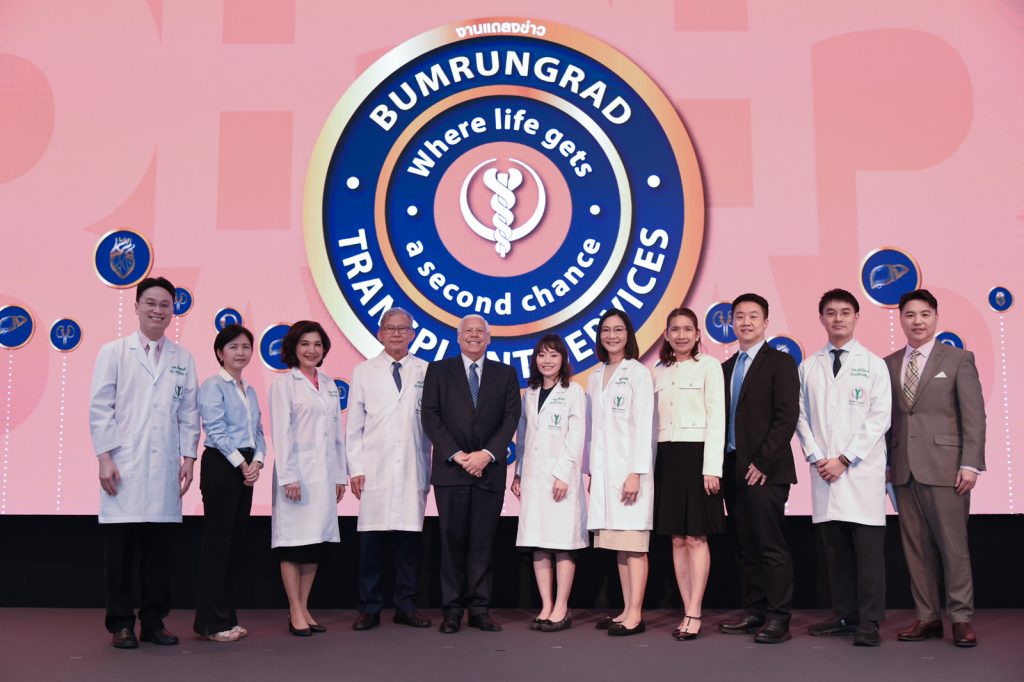
บำรุงราษฎร์ได้ดำเนินการปลูกถ่ายไตให้กับผู้ป่วยมากว่า 37 ปี ให้บริการครอบคลุมตั้งแต่การตรวจวินิจฉัยในระยะเริ่มต้น การดูแลผู้ป่วยโรคไตเรื้อรัง และการรักษาผู้ป่วยโรคไตระยะสุดท้ายด้วยการปลูกถ่ายไต และสามารถปลูกถ่ายไตผู้ป่วยได้ตั้งแต่อายุไม่ถึง 10 ปี จนถึงอายุมากกว่า 80 ปี รวมถึงผู้ป่วยที่มีโรคประจำตัวหลายโรค โดยมีทีมแพทย์และพยาบาลดูแลภาวะหลังการปลูกถ่ายไตอย่างใกล้ชิด นอกจากนี้ ยังมีทีมแพทย์ผ่าตัดที่พร้อมเดินทางไปผ่าตัดไตที่รับบริจาคจากโรงพยาบาลต่าง ๆ ทั่วประเทศ และพร้อมผ่าตัดปลูกถ่ายไตให้ผู้ป่วยหลังจากไตบริจาคมาถึงโรงพยาบาล
โดยในช่วง 2-3 ปีที่ผ่านมา บำรุงราษฎร์มีอัตราความสำเร็จในการปลูกถ่ายไตสูงกว่า 90% ซึ่งนับเป็นอัตราความสำเร็จที่สูงเทียบเท่ามาตรฐานระดับโลกอย่างสหรัฐอเมริกา แคนาดา และยุโรปตะวันตก ความสำเร็จนี้เกิดจากการผสมผสานประสบการณ์ของทีมแพทย์ เทคโนโลยีที่ล้ำสมัย และนวัตกรรมใหม่ ๆ เช่น การตรวจวิเคราะห์ยีน การใช้เทคนิคการผ่าตัดส่องกล้องและหุ่นยนต์ช่วยผ่าตัด ที่สำคัญ บำรุงราษฎร์ยังสามารถทำการปลูกถ่ายไตข้ามหมู่เลือดได้สำเร็จ ทำให้ผู้ป่วยได้รับการดูแลอย่างครบวงจรและมีโอกาสกลับมามีชีวิตที่สมบูรณ์ได้อีกครั้ง
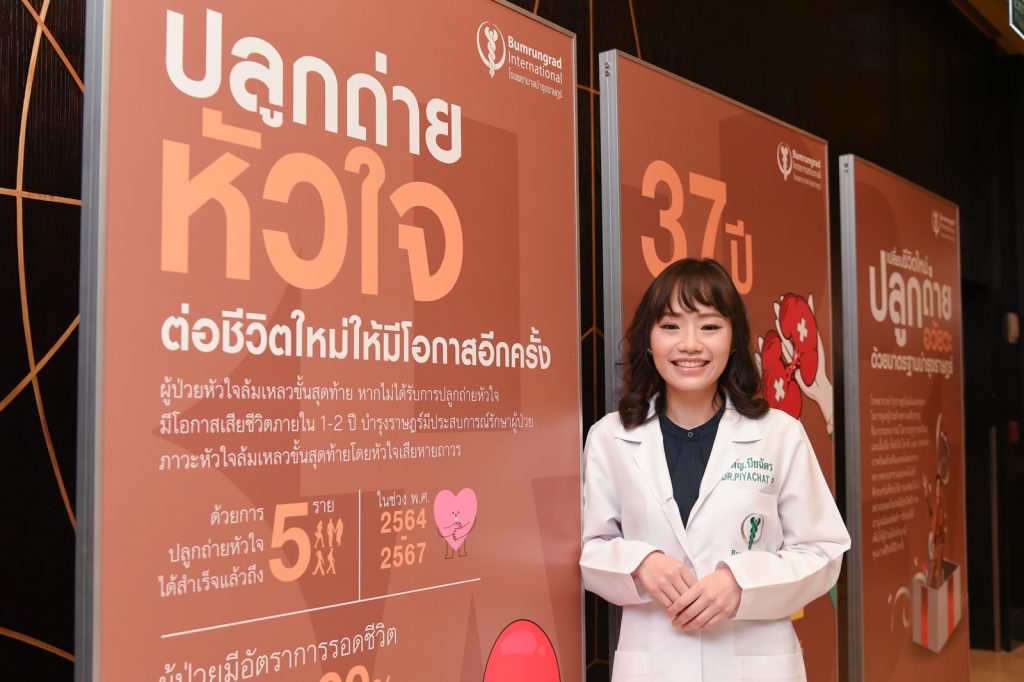
พญ. ปิยฉัตร พิพัฒนพงศ์โสภณ แพทย์เฉพาะทางด้านอายุรศาสตร์โรคหัวใจ – หัวใจล้มเหลว โรงพยาบาลบำรุงราษฎร์ กล่าวถึงผู้ป่วยที่มีภาวะหัวใจล้มเหลวขั้นสุดท้ายมักเผชิญกับความท้าทายในการใช้ชีวิตประจำวัน หัวใจที่อ่อนล้าไม่สามารถสูบฉีดเลือดไปเลี้ยงร่างกายได้อย่างเพียงพอ ทำให้เหนื่อยง่าย หายใจลำบาก นอนราบไม่ได้ ส่งผลให้คุณภาพชีวิตแย่ลง และมีความเสี่ยงต่อการเสียชีวิตสูงถึง 10% ต่อปี ‘การปลูกถ่ายหัวใจ’ จึงเป็นการรักษาขั้นสูงสุดที่ช่วยยืดอายุและเพิ่มคุณภาพชีวิตให้กับผู้ป่วย ปัจจุบันการผ่าตัดเปลี่ยนหัวใจถือว่าประสบความสำเร็จสูง จากสถิติผู้ป่วยมีอัตรารอดชีวิตมากถึง 85-90% ซึ่งหากผู้ป่วยไม่ได้รับการผ่าตัดปลูกถ่ายหัวใจในช่วงเวลาที่เหมาะสม ส่วนใหญ่อาจเสียชีวิตภายในระยะเวลาเพียง 1-2 ปี
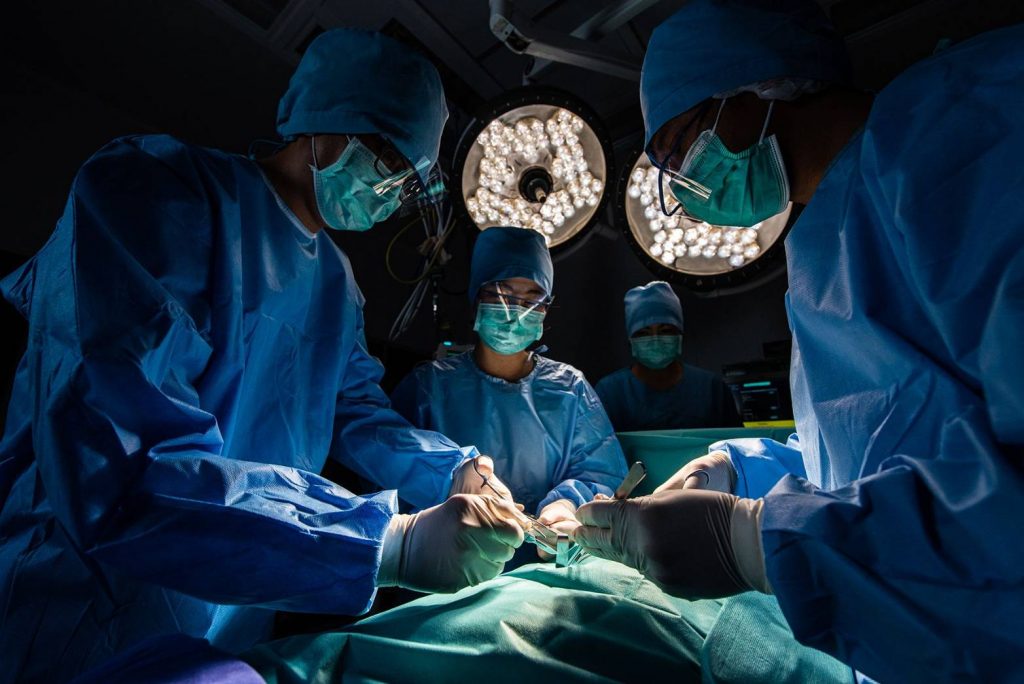
การปลูกถ่ายหัวใจ จึงเป็นทางเลือกในการรักษาที่สำคัญสำหรับผู้ป่วยภาวะหัวใจล้มเหลวขั้นสุดท้าย เพราะเป็นการรักษาที่ตรงจุดและมีประสิทธิภาพสูง โดยการแทนที่หัวใจที่เสียหายด้วยหัวใจดวงใหม่จากผู้บริจาค ทำให้หัวใจสามารถทำงานได้เป็นปกติอีกครั้ง ส่งผลให้ผู้ป่วยมีคุณภาพชีวิตที่ดีขึ้นอย่างเห็นได้ชัด ทั้งนี้ การปลูกถ่ายหัวใจเป็นการผ่าตัดใหญ่และมีขั้นตอนที่ซับซ้อน โดยก่อนการผ่าตัด แพทย์จำเป็นต้องประเมินสภาพร่างกายและสภาพจิตใจของผู้ป่วยอย่างละเอียดเพื่อให้มั่นใจการผ่าตัดจะได้ผลลัพธ์ที่ดีที่สุด และหลังการผ่าตัด ผู้ป่วยจะต้องอยู่ที่โรงพยาบาลประมาณ 1-3 สัปดาห์ ซึ่งจะมีหน่วยดูแลผู้ป่วยโรคหัวใจขั้นวิกฤต ที่จะดูแลผู้ป่วยหลังการผ่าตัดปลูกถ่ายหัวใจอย่างใกล้ชิดตลอด 24 ชั่วโมง
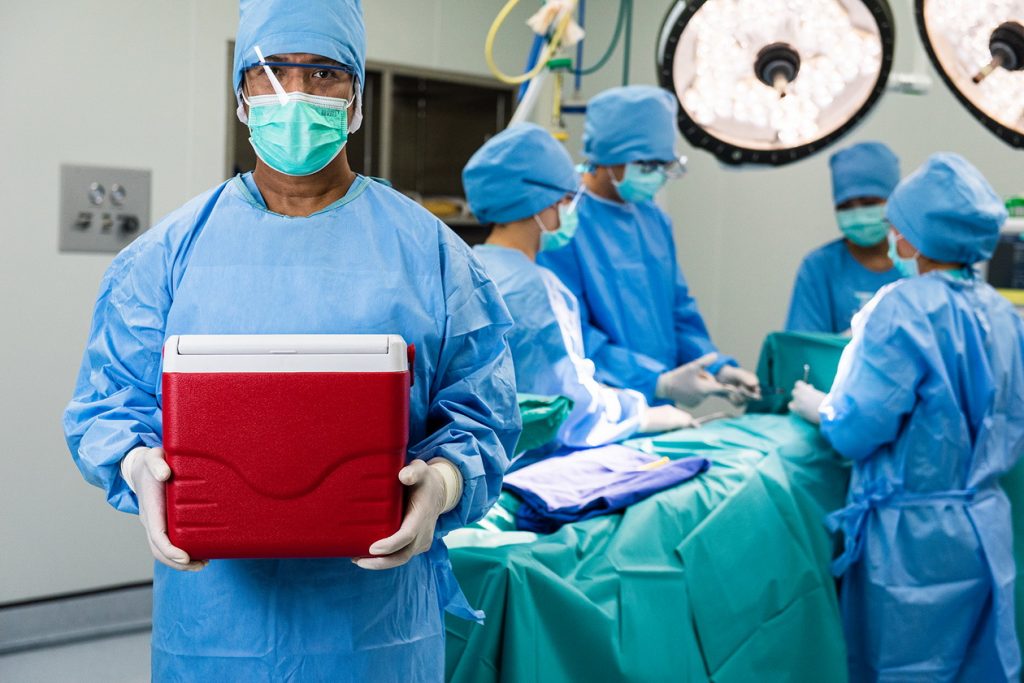
สถาบันโรคหัวใจ โรงพยาบาลบำรุงราษฎร์ มีทีมแพทย์เฉพาะทางและทีมสหสาขาวิชาชีพที่เชี่ยวชาญในการดูแลผู้ป่วยโรคหัวใจอย่างครอบคลุม รวมถึงแพทย์เฉพาะทางด้านภาวะหัวใจล้มเหลว ซึ่งผ่านการฝึกอบรมและได้รับวุฒิบัตรผู้ชำนาญการเฉพาะทางสาขาภาวะหัวใจล้มเหลวจากประเทศสหรัฐอเมริกา (American Board) ด้วยแนวทางการดูแลรักษาเฉพาะบุคคล ตั้งแต่การวินิจฉัย การวางแผนการรักษาด้วยวิธีต่าง ๆ จนถึงการผ่าตัดปลูกถ่ายหัวใจ ด้วยประสบการณ์มากกว่า 20 ปี พร้อมเทคโนโลยีที่ทันสมัย และได้การรับรองมาตรฐานสากล JCI Heart Failure สหรัฐอเมริกา ทำให้การผ่าตัดปลูกถ่ายหัวใจประสบความสำเร็จอย่างสูง โดยในช่วง 4 ปีที่ผ่านมา บำรุงราษฎร์สามารถผ่าตัดปลูกถ่ายหัวใจให้กับผู้ป่วย 5 รายได้สำเร็จ และสามารถกลับไปใช้ชีวิตได้ตามปกติและมีคุณภาพชีวิตที่ดีขึ้น
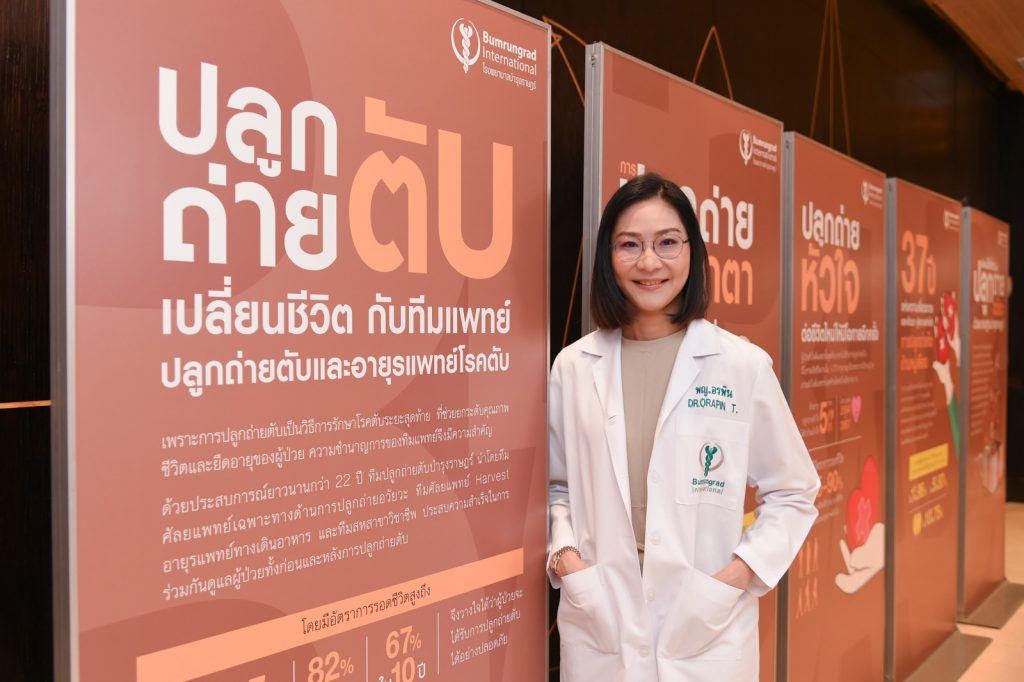
พญ. อรพิน ธนพันธุ์พาณิชย์ แพทย์เฉพาะทางด้านอายุรศาสตร์โรคระบบทางเดินอาหาร – โรคตับ โรงพยาบาลบำรุงราษฎร์ กล่าวว่า ผู้ที่จำเป็นต้องได้รับการปลูกถ่ายอวัยวะตับ มักจะเป็นผู้ป่วยที่มีโรคเกี่ยวกับตับในระยะสุดท้ายที่ไม่สามารถรักษาด้วยวิธีอื่น ๆ ได้ และส่งผลกระทบต่อการดำเนินชีวิตประจำวันอย่างมาก โดยโรคที่จำเป็นต้องได้รับการปลูกถ่ายตับ ได้แก่ 1. ภาวะตับวายเฉียบพลัน มักเกิดกับผู้ป่วยที่ไม่ได้เป็นโรคตับมาก่อน ส่วนใหญ่เกิดจากการใช้ยาเกินขนาดหรือเกิดจากเชื้อไวรัสตับอักเสบ 2. โรคทางพันธุกรรม เช่น โรคที่ทำให้มีการสะสมสารบางอย่างในตับผิดปกติ ส่งผลต่อการทำงานของตับและอวัยวะอื่น ๆ 3. ภาวะตับอักเสบเรื้อรังจนทำให้เป็นตับแข็งระยะท้ายที่มีภาวะแทรกซ้อนต่าง ๆ ไม่สามารถแก้ไขได้ด้วยยาหรือเทคนิคการรักษาอื่น ๆ ซึ่งเกิดหลายสาเหตุด้วยกัน เช่น การติดเชื้อไวรัสตับอักเสบและเชื้อไวรัสอื่น ๆ การดื่มสุรามากเกินไปเป็นระยะเวลานานและโรคไขมันพอกตับ และ 4. โรคมะเร็งตับ ขึ้นอยู่กับขนาดของก้อนและสภาพของตับว่าเหมาะสมกับการปลูกถ่ายตับหรือไม่ หากเป็นในระยะแรกเริ่ม แพทย์สามารถรักษาได้ด้วยวิธีการอื่น ซึ่งการรักษาด้วยการปลูกถ่ายตับจะช่วยยืดอายุและเพิ่มคุณภาพชีวิตผู้ป่วยให้ดีขึ้น
การรักษาด้วยการปลูกถ่ายตับ จะทำให้ร่างกายของผู้ป่วยกลับมาทำงานได้เป็นปกติมากขึ้น ทั้งในส่วนของการทำงานของอวัยวะต่าง ๆ ดีขึ้น โดยตับใหม่จะทำหน้าที่ในการกำจัดสารพิษในร่างกาย สร้างโปรตีน และผลิตน้ำดี ทำให้การทำงานของอวัยวะอื่น ๆ เช่น ไต หัวใจ และสมองกลับมาเป็นปกติ รวมถึงอาการที่เกิดจากโรคตับจะทุเลาลง เช่น อาการเหนื่อยง่าย บวม อาเจียน ก็จะทุเลาลงหรือหายไป ส่งผลให้ผู้ป่วยมีแรงมากขึ้น ทำกิจวัตรประจำวันได้มากขึ้น และมีคุณภาพชีวิตที่ดีขึ้น รวมถึงมีอายุขัยที่เพิ่มขึ้น
ผู้ป่วยที่ได้รับการปลูกถ่ายตับ จะมีอัตราการรอดชีวิตสูงถึง 97% ในปีแรก, 82% ใน 5 ปี และ 67% ใน 10 ปี ซึ่งถือเป็นอัตราความสำเร็จที่สูง สะท้อนให้เห็นถึงความเชี่ยวชาญของทีมแพทย์และการนำเทคโนโลยีที่ทันสมัยมาปรับใช้ และด้วยประสบการณ์กว่า 22 ปีในการปลูกถ่ายตับ ซึ่งคลินิกโรคตับเป็นหนึ่งใน 8 คลินิกเฉพาะทางของศูนย์ทางเดินอาหาร-ตับ โรงพยาบาลบำรุงราษฎร์ที่ดูแลรักษาผู้ป่วยมากกว่า 42,000 รายต่อปี และสามารถดูแลรักษาโรคตับได้อย่างครอบคลุม เช่น ตับอักเสบเฉียบพลัน ตับอักเสบเรื้อรัง ก้อนเนื้อในตับ ไขมันพอกตับ และมะเร็งตับ จนถึงการผ่าตัดปลูกถ่ายตับ ทำให้ผู้ป่วยมีโอกาสกลับมามีคุณภาพชีวิตที่ดีขึ้นอีกครั้ง
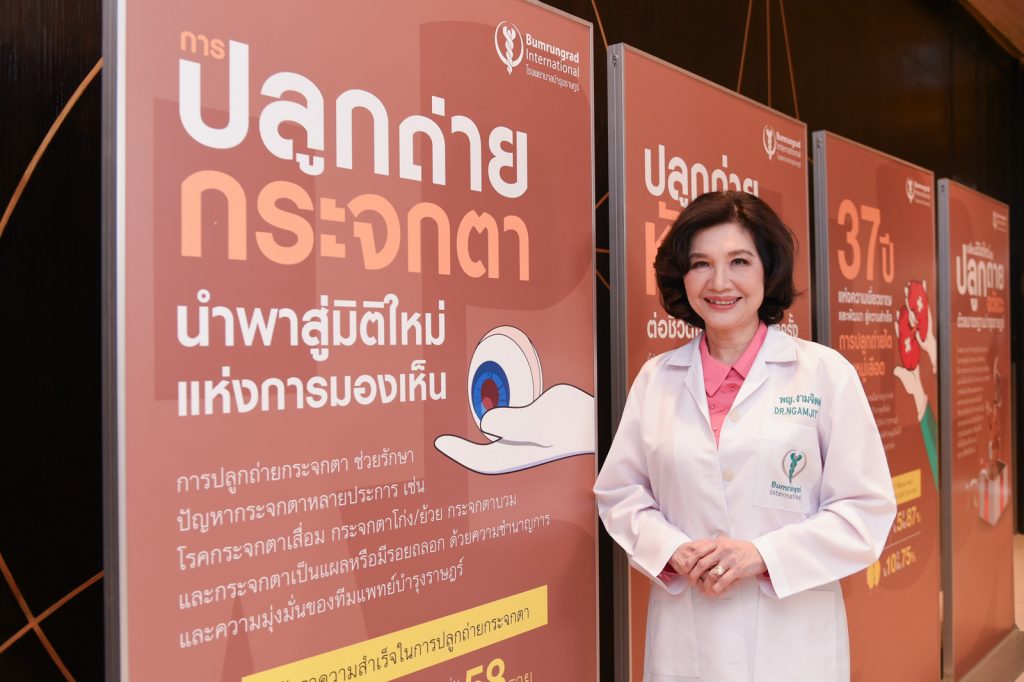
ศ.พญ. งามจิตต์ เกษตรสุวรรณ แพทย์เฉพาะทางด้านจักษุวิทยา การผ่าตัดแก้ไขสายตา กระจกตา และ ต้อกระจก โรงพยาบาลบำรุงราษฎร์ กล่าวปิดท้ายเกี่ยวกับปัญหากระจกตาเป็นสาเหตุสำคัญที่นำไปสู่การสูญเสียการมองเห็น โดยเฉพาะอย่างยิ่งโรคกระจกตาเสื่อม กระจกตาโก่ง/ย้วย กระจกตาบวม และกระจกตาเป็นแผล ซึ่ง ‘การปลูกถ่ายกระจกตา’ เป็นการผ่าตัดเพื่อเปลี่ยนกระจกตาส่วนที่เสียหายด้วยกระจกตาจากผู้บริจาค เพื่อช่วยแก้ไขปัญหาการมองเห็นของผู้ป่วยให้ดีขึ้น ช่วยเสริมความแข็งแรงของกระจกตาในกรณีที่ผู้ป่วยมีกระจกตาบางหรือทะลุ ซึ่งบำรุงราษฎร์ใช้เทคโนโลยีที่ทันสมัย เช่น กล้องผ่าตัดที่มีการผนวกเทคนิคที่ช่วยในการตรวจชั้นต่าง ๆ ของกระจกตาในระหว่างผ่าตัด ทำให้การผ่าตัดมีความแม่นยำสูงขึ้น และลดความเสี่ยงในการเกิดภาวะแทรกซ้อน
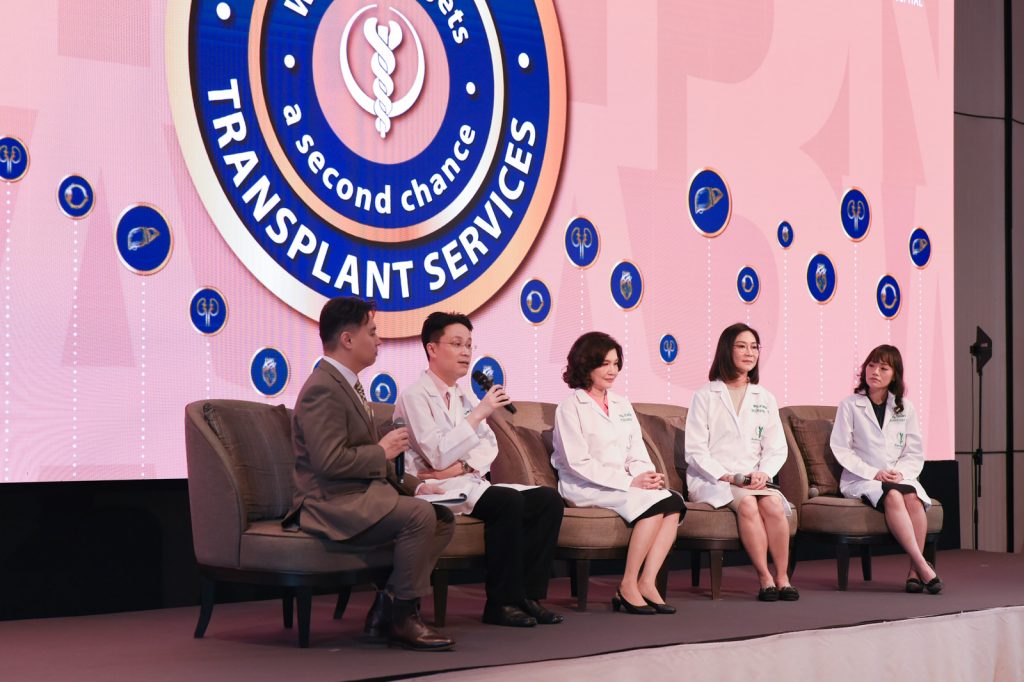
การผ่าตัดเปลี่ยนกระจกตา มีด้วยกัน 2 วิธี คือ 1. การผ่าตัดปลูกถ่ายกระจกตาทุกชั้น เหมาะสำหรับผู้ป่วยที่มีปัญหาที่กระจกตาทุกชั้น และ 2. การผ่าตัดปลูกถ่ายกระจกตาเฉพาะชั้น เหมาะสำหรับผู้ป่วยที่มีปัญหาที่กระจกตาบางชั้นเท่านั้น โดยมีให้เลือกทั้งการปลูกถ่ายกระจกตาชั้นบน และการปลูกถ่ายกระจกตาชั้นใน ซึ่งเป็นเทคนิคที่ละเอียดอ่อนและมีความแม่นยำสูง และในกรณีผู้ป่วยที่มีโรคกระจกตาซับซ้อน ศูนย์ปลูกถ่ายกระจกตา โรงพยาบาลบำรุงราษฎร์ มีทีมแพทย์ผู้เชี่ยวชาญหลากหลายสาขา พร้อมเทคนิคการรักษาที่หลากหลาย เช่น เลเซอร์ PTK, ฉายแสง UV-A และการผ่าตัดใส่วงแหวน ซึ่งอาจใช้รักษาร่วมกับการปลูกถ่ายกระจกตาเพื่อปรับปรุงการมองเห็นให้ดีที่สุด
ด้วยประสบการณ์ความเชี่ยวชาญของทีมแพทย์และเทคโนโลยีที่ทันสมัย โรงพยาบาลบำรุงราษฎร์ประสบความสำเร็จในการปลูกถ่ายกระจกตาด้วยอัตราสูงถึง 97% โดยผู้ป่วยยังคงมองเห็นได้ชัดเจนหลังการผ่าตัด 1 ปี และไม่มีรายงานภาวะแทรกซ้อนใด ๆ เช่น การติดเชื้อ ทำให้ผู้ป่วยสามารถกลับมามองเห็นเป็นปกติได้
Giving People New Hope and New Life! Bumrungrad Brings World-Class Standards to Thailand’s Leading Organ Transplant Center. Reveals Successful Heart, Kidney, Liver, and Cornea Transplants.
Organ transplantation is a medical advancement which saves lives and can extend life for patients suffering from chronic diseases like kidney disease, liver cirrhosis, and heart failure. Also, corneal transplants improve sight so they can return to their normal lives and experience a high quality of life.
The world is currently facing a shortage of available organs for transplantation. According to the Global Observatory on Donation and Transplantation (GODT), in 2022, there were only 157,494 organ transplants performed worldwide. Moreover, kidneys were the most transplanted organ, followed by the liver and heart. However, many patients remain waiting for an organ transplant. This is consistent with the latest data in Thailand. As of December 31, 2024, the Thai Red Cross Organ Donation Center reported there were as many as 7,486 patients waiting for an organ transplant – a number which has steadily increased over time. The vast majority of those waiting for an organ are waiting for a kidney (95%) – with most of the remainder are waiting for a liver, heart, lungs, or pancreas transplant. Over the same time period, only 946 people have received an organ transplant, and an average of 2 people die per week while waiting for an organ.
Assoc. Prof. Taveesin Tanprayoon, MD, Chief Medical Officer at Bumrungrad International Hospital, spoke at a press event called Bumrungrad Transplant Services: Where Life Gets a Second Chance and shared “Organ transplants give people new hope and new life because they are an opportunity for patients to regain their full potential and live a more fulfilling life. Bumrungrad International Hospital, as a quaternary care facility, continues to develop centers of excellence to provide holistic patient care and deliver the best outcomes possible. Our teams of doctors and multidisciplinary healthcare professionals are experienced in performing major organ transplantation. Bumrungrad is a private hospital certified by the Thai Red Cross Society Organ Donation Center as a heart, kidney, liver and cornea transplant center. It is also the first private hospital in Thailand able to transplant heart, kidney, liver and cornea. Organ transplantation is complex and requires the expertise of a team of doctors, modern technology, high standards of care, and experience.”
Tatpong Chit-ua-aree, MD, a specialist in Internal Medicine – Nephrology at Bumrungrad International Hospital, said, “Kidneys are the most frequently transplanted organs in the world. People who need a kidney transplant suffer from end-stage renal disease. Whether they are on dialysis yet or not, they are eligible to receive a kidney transplant. These patients must also receive a comprehensive health assessment from a variety of specialists like, cardiologists, psychiatrists, and transplant surgeons.”
Bumrungrad International Hospital has performed kidney transplants for over 37 years. We offer a comprehensive range of services, from early diagnosis, care for chronic kidney disease, to kidney transplant for patients with end-stage renal disease. We can transplant kidneys into patients as young as 10 years old and up to over 80 years old, including those with multiple comorbidities. Our team of doctors and nurses closely monitors our patients post-transplant. In addition, we have a team of surgeons who travel to operate on donated kidneys from locations outside the hospital and who are ready to perform transplants after the donated kidneys arrive.
Over the past 2-3 years, our success rate has been over 90%, which is comparable to the standards found in the United States, Canada, and Western Europe. This success is the result of a combination of the experience of our medical teams, use of advanced technology, and new innovations such as drug allergy gene analysis, laparoscopic surgical techniques, and robotic surgery. Importantly, Bumrungrad International Hospital is the first private hospital in Thailand to successfully perform ABO incompatible kidney transplants, allowing patients to receive comprehensive care and a chance to return to a full life.
Piyachat Pipatpongsopon, MD, a specialist in Cardiology – Heart Failure at Bumrungrad International Hospital, said that patients with end-stage heart failure often face challenges in day-to-day living. A weakened heart is unable to pump enough blood to the body, causing them to tire easily, have difficulty breathing, and experience palpitations, which worsens their quality of life and increases the risk of death by up to 10% per year. Heart transplant is the ultimate treatment to helps extend both lifespan and health span for patients. Currently, heart transplantation is highly successful and data show patient survival rates reach 85 to 90%. However, if patients do not receive a heart transplant at the right time, most may die within 1–2 years of diagnosis.
Heart transplantation is an important treatment option for patients with end-stage heart failure because it is a targeted and highly effective treatment. By replacing the damaged heart with a donor heart, the cardiovascular system can return to more normal function, resulting in a significantly improved quality of life for the patient. However, heart transplantation is a major procedure, which carries with it much complexity. To qualify, doctors must thoroughly assess the patient’s physical and mental health to ensure the best results. Post-op, the patient must recover in hospital for 1 to 3 weeks in a cardiac ICU that closely monitors them around the clock.
The Bumrungrad Heart Institute has a team of specialists and multidisciplinary professionals who expertly deliver comprehensive care to our heart patients. Our specialist doctors include heart failure specialists who have received board certification in the United States. We take a personalized approach to care, from diagnosis and treatment planning, to heart transplant surgery and leverage our over 20 years of experience, modern technology, and international JCI (USA) Heart Failure certification, to provide safe and successful heart transplants. Over the past 4 years, Bumrungrad International Hospital has successfully performed 5 heart transplants – allowing those people to return to their normal lives and have an improved quality of life.
Orapin Tanapanpanit, MD, a specialist in Gastroenterology and Hepatology at Bumrungrad International Hospital, said that those who need a liver transplant are usually have end-stage liver disease that cannot be treated by other methods, and which has a severe impact on daily living. Conditions requiring a liver transplant include end-stage cirrhosis with complications; acute liver failure; early-stage inoperative liver cancer or liver cancer that has not metastasized to the large blood vessels of the liver or outside the liver; and some types of congenital liver dysfunction. Liver transplants help extend patient lifespan and improve quality of life.
Liver transplants allow the patient’s body to return to normal function, with improved organ function. The new liver will eliminate toxins from the body, create protein, and produce bile, allowing other organs such as the kidneys, heart, and brain to return to normal functioning. Symptoms caused by liver disease will also be reduced or eliminated, such as fatigue, swelling, and vomiting. As a result, patients will have more energy, be able to do more of their daily activities, and have a better quality of life–including increased life expectancy.
Liver transplant patients have a one-year survival rate of up to 97%; a 5-year survival rate of 82%; and a 10-year survival rate of 67%, which is considered a high success rate that reflects the expertise of the medical team and the use of modern technology. With over 22 years of experience in liver transplantation, our Liver Diseases Clinic is one of 8 specialized clinics in Digestive Disease (GI) Center, which treats over 42,000 patients annually, providing comprehensive treatment of liver diseases, such as acute hepatitis, chronic hepatitis, liver tumors, fatty liver, and liver cancer. We also perform liver transplant surgery as another way to give our patients the chance to regain a better quality of life.
Prof. Ngamjit Kasetsuwan, MD, a specialist in Cataract – Cornea – Refractive Surgery at Bumrungrad International Hospital, concluded by saying that corneal problems are a major cause of vision loss, which include corneal degeneration, corneal buckling/sagging, corneal swelling, and corneal ulcers or abrasions. Corneal transplantation replaces the damaged cornea with a donor cornea to improve patient vision and strengthen the cornea in cases where the patient has a thin or perforated cornea. Bumrungrad uses modern technology, such as a DaVinci robot that enables a number of techniques to examine the different layers of the cornea during surgery, making the surgery more precises and reducing the risk of complications.
There are 2 types of corneal transplantation: all-layer corneal transplantation, which is for patients with problems throughout the entire cornea; and single-layer corneal transplantation, which is for patients with problems in only a portion of the cornea. Additionally, there are both upper and inner corneal transplantations, which are delicate high precision techniques. For patients with complicated corneal disease, Bumrungrad’s Cornea Transplant Center has a team of specialists in a variety of fields that are qualified in a variety of treatment techniques, such as PTK laser, UV-A light therapy, and annular surgery, which can be used in conjunction with corneal transplantation to improve vision as much as possible.
With the expertise of our medical team and state-of-the-art technology, Bumrungr



